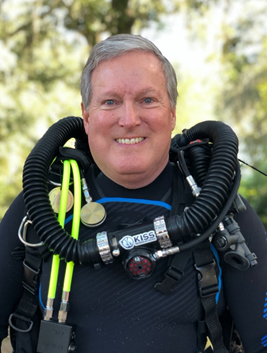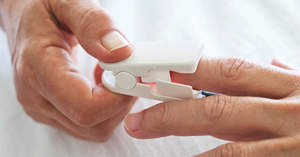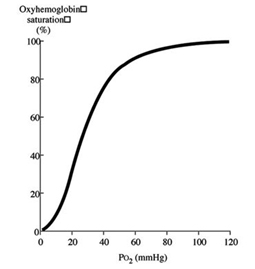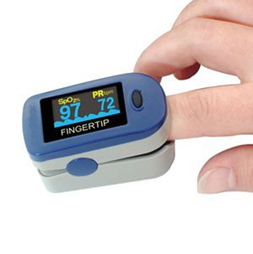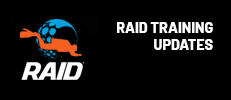- WHY RAID? 1001 REASONS TO PARTNER WITH RAID - October 7, 2022
- PROTECT YOURSELF FROM LIABILITY.RAID’S COMPREHENSIVE Q&A SYSTEM CAN DO THAT! - July 14, 2022
- ABC DIVING TECHREATIONAL CENTRE JOIN RAID - July 9, 2022
Dalış Çantanızda Bir Adet Bulundurmalı Mısınız?
Douglas Ebersole, MD – RAID Tıbbi Danışman
COVID-19 pandemisinde çok fazla semptom göstermeyen ancak kanlarında oksijenlenme düşen hastalar olduğu raporlanmıştır. Bunun bir sonucu olarak puls oksimetresi çok ilgi görmeye başlamıştır. Dalıcılar, altı dalıcı COVID-19 geçirip iyileştiklerini hissetmelerine rağmen akciğer tomografileri bozuk çıktıktan sonra iyice endişelenmiştir. Bunun sonucunda bir dizi dalıcı puls oksimetreler satın almıştır, sıklıkla da nasıl çalıştıkları hakkında pek bilgi sahibi değildirler. Peki, dalıcılar pulse oksimetreler hakkında ne bilmelidir?
Temel Solunum Fizyolojisi
Lise biyoloji dersinden de hatırladığınız gibi kalbin sağ tarafı oksijence fakir kanı oksijenlenmesi için akciğere pompalar. Ardından oksijence zengin kan akciğerlerden kalbin sol tarafına geçer ve buradan da vücut dokularına pompalanır ve kan tekrar devridaim etmek için kalbin sağ tarafına döner.
Oksijen kanda, hemoglobin adı verilen ve dört oksijen molekülünü bağlayabilen bir protein içeren kırmızı kan hücreleri tarafından taşınır. Oksijenin bir kısmı kanda çözünebilir ancak bu miktar hemoglobin tarafından taşınana kıyasla çok azdır. Hemoglobin kanın oksijen taşıma kapasitesini sadece kanda çözünmeye kıyasla 70 kat arttırır. Hemoglobinde oksijen bağlayan alanların yüzdesine oksijen satürasyonu denir ve bu değer oksijenin kısmi basıncına dayanır. Kan akciğerleri %98 oksijen satürasyonuna tekabül eden ve 100 mm Hg (PO2) kısmi oksijen basıncına denk gelen bir değerle terk eder. Bu demektir ki hemoglobinin oksijen bağlayan alanlarının %98’ine bağlı oksijen molekülleri mevcuttur. Vücut dokuları oksijeni oksijen kısmi basıncı yaklaşık 40 mm Hg yani %75 oksijen satürasyonuna denk gelen değere gelene kadar metabolize eder. Bunun sonucunda hemoglobin oksijeni dokularda serbest bırakır ve ardından hücrelerin çöpü olan karbon dioksiti karbon dioksitin salınıp oksijenin geri bağlandığı akciğerlere taşır.
Yandaki oksihemoglobin eğrisine bakıldığında bunun sigmoid bir eğri olduğu görülür. Oksijen kısmi basıncı (PO2) ve oksijen satürasyonu arasındaki ilişki lineer değildir. Yüksek PO2 seviyelerinde PO2 değerinde ciddi bir düşüş görülürken oksijen satürasyonunda pek bir değişiklik olmayabilir. Ancak 40 mm Hg değerinin altında bir PO2 seviyesinde PO2’deki küçük bir düşüş oksijen satürasyonunda büyük düşüşlere yol açabilir.
Dolayısıyla, PO2 değeri normal olan bir sağlıklı bireyde ek oksijen vermek oksijen satürasyonuna hiçbir etki etmez. Ancak pnömoni gibi gaz değiş tokuşunun bozulduğu hastalıklarda, PO2 oksijenin hemoglobine yeterince bağlanamadığı ve dokulara ihtiyaç duydukları oksijeni sağlayamadığı derecede düşüş gösterebilir. %90’dan daha küçük oksijen satürasyon değerlerinde ek oksijen tedavisi faydalıdır. Kanın kısmi oksijen basıncını yani PO2 değerini bir arterden kan alarak doğrudan ölçebilir ya da pulse oksimetre adı verilen cihazla damar yolu açmaksızın ölçüm yapabilirsiniz.
Puls Oksimetre Nedir?
Puls oksimetre broşa benzer küçük bir aygıttır. Parmağınızı içine sokarsınız ve birkaç saniye içerisinde ışığı yanar ve nabzınızı ve oksijen satürasyonunuzu verir. Çoğu sağlıklı insanın oksijen satürasyonlarının %95 – %98 arasında olması gerekir. Yukarıda bahsedildiği üzere %90 altındaki değerler düşündürücüdür ve doktorunuzun görüşüne başvurmanızı gerektirir.
Pulse Oksimetre Nasıl Çalışır?
Parmağınızı pulse oksimetre içerisine yerleştirdiğinizde cihaz yoluyla parmağınıza farklı dalga boylarında ışıklar gönderilir. Hemoglobin taşıdığı oksijen seviyesine göre farklı dalga boylarında ve farklı miktarlarda ışığı emer. Ardından da oksijen satürasyonunuzu ve nabzınızı gösterir. Burada şu notu düşmekte fayda var ki, bu cihazlar eller ılıkken soğuk olduğu duruma göre daha iyi çalışır ve eğer tırnaklarınızda koyu renk oje varsa iyi çalışmaz. Genellikle işaret parmağı ya da yüzük parmağından ölçüm almak en doğrusudur. Hastanelerde kullanılan profesyonel cihazların kesinliği doğrudan arterden alınan kan örneğine kıyasla yüzde iki bir sapma gösterir.
Puls Oksimetreler Ne Zaman Faydalıdır?
Kanda normalden fazla oksijen olması durumunda oluşabilecek pek çok hastalık vardır. COVID-19 da dahil olmak üzere bu hastalıkların bazıları vücutta çok düşük oksijen satürasyonuna sebep olabilir fakat yeterince belirgin olmayan semptomlar gösteren hastalarda da ilk anda çok düşük oksijen satürasyonları görülebilir. Bu aşamada puls oksimetre çok faydalı olabilir. Bu aşamada kendinizde öksürük, nefes darlığı, ateş ve en önemlisi göğüs kafesinde sıkışma gibi semptomlar gözlemliyorsanız, puls oksimetrede normalden düşük bir değer okumak durumunuzun kötüleştiğine ve en kısa zamanda tıbbi yardım aramanız gerektiğine dair bir erken uyarı olabilir.
Ayrıca, COVID-19 gibi solunum yolu enfeksiyonlarından kurtulan bazı kişilerde kandaki oksijen seviyesi dinlenme anında normal olup, egzersiz sırasında ciddi anlamda düşebilir. Buna egzersiz tarafından tetiklenen hipoksmi denir ve ventilasyon ve gaz alışverişinde süreğen tutarsızlıklar yaratır. Bu durum genellikle maksimum egzersiz kapasitesine erişildiğinde kendini gösterir. Şu aşikardır ki, bu durum dinlenme halinde kendisini iyi hisseden ve normal oksijen satürasyonuna sahip olan fakat scuba dalış sırasında hipoksemi geçirebilecek bir dalıcı için ciddi sıkıntı yaratabilecek bir durumdur. Bunun yanında eğer COVID-19 gibi bir solunum yolu hastalığından kurtulduysanız ve doktorunuz hem dinlenme halinde hem de egzersiz sırasında normal puls oksimetreniz olduğunu söylediyse dalışa güvenle dönebilirsiniz.
Ben De Bir Tane İstiyorum!
Eğer kendi puls oksimetrenize sahip olmanız gerektiğine karar verirseniz bu alışverişi yaparken dikkatli olmayı unutmayın. Bulunduğunuz bölgeye göre pulse oksimetrelerin ölçüm kesinliği 2016 yılında Güney Afrika Tıp Dergisinde basılan bir makaleye göre %6’ya kadar oynayabilir. Bu çalışma düşük maliyetli, taşınabilir yatak yanına konan parmak ucundan ölçüm alan puls oksimetrelerin yüksek oksijen seviyelerinde güvenilir olduğunu ancak düşük oksijen seviyelerinde daha az güvenilir olduğunu göstermektedir. Cihaz ne kadar pahalı ise o kadar kesin ölçüm yapacağını düşünebilirsiniz ancak bu her zaman doğru bir durum değildir. Bir oksimetre satın almadan önce aşağıdaki FDA ağ yolundan erişilebilir olan 510k büyüklüğündeki Pazara Sürülmeden Önce Uyarı Veri Tabanından ilgili cihazı araştırabilirsiniz. LINK HERE.
Akıllı telefon uygulamaları ve Fitbit ya da Garmin gibi ancak kandaki oksijen seviyesini tahmin etmekte farklı bir teknoloji kullanacak giyilebilir cihazların da Apple tarafından yakında piyasaya sürüleceğine dair dedikodular var. Parmağın diğer yanından ışığın ne kadar “geçirildiğini” ölçen cihazlar yerine giyilebilir cihazlar ya da kameralı uygulamalar genellikle el bileğinden gelen “yansıma” aracılığıyla oksijen satürasyonunu ölçer. California San Francisco üniversitesindeki Hipoksemi laboratuvarının müdürü ve anestezi profesörü Dr. Philip Bickler’e göre şu an kullanımda olan “yansıma” aracılığıyla ölçüm yapan cihazlar “geçirgenlik” kullanarak ölçüm yapan cihazlara göre daha az keskin ölçüm yapar. Dolayısıyla yeniliklere hazırlıklı olun.
Sonuç olarak:
- Pulse oksimetreler hemoglobinin oksijen bağlama alanlarını izleyen cihazlardır.
- COVID-19 hipoksemi ve pek çok diğer semptoma sebep olabilir ve bu hipoksemi egzersiz ile çok daha kötüye gidebilir.
- Eğer solunum sistemine dair bir hastalığınız var ise her ne kadar semptomlarınızı izlemek sizin için önemli ise de puls oksimetreler durumunuzun kötüleştiğini belirten asimptometik hipoksemi adı verilen ve durumunuzun kötüleştiğini yani tıbbi yardım almanız gerektiğini belirten durumun teşhisini koymanızı sağlayabilir.
- Dinlenme ve egzersiz nabızları COVID-19 hastası olmuş ve iyileşmiş kişilerin ne zaman dalışa ve diğer fiziksel etkinliklere dönebileceklerini gözlemlemede faydalı olabilir.
- Her ne kadar puls oksimetreleri kullanmayı profesyonellere bırakabilirseniz de bir puls oksimetre satın almadan önce FDA web sitesinden kendi araştırmanızı yapın.
